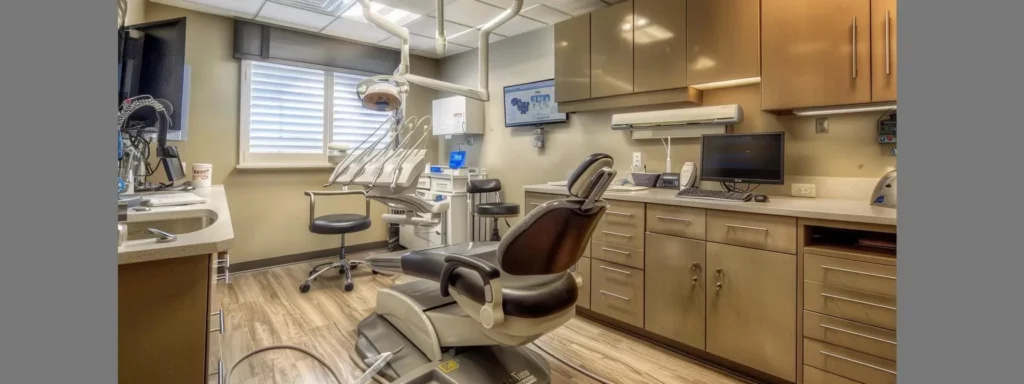Newborn sleep apnea affects more babies than most parents realize. This breathing disorder stops your infant’s breathing repeatedly during sleep. Dr. Bethaney Brenner has guided families through sleep apnea concerns in Burlington, CT for over 40 years since establishing her practice in 1980. She understands how scary it feels when your newborn struggles to breathe.
Understanding What Puts Newborns at Risk
Sleep apnea in newborns comes from three main sources. Genetic conditions passed down through families play a role. Physical differences in how airways formed during pregnancy matter too. Environmental factors like smoke exposure create additional risks parents can actually control.
Breaking these risks into categories helps doctors focus on prevention. Your baby’s pediatrician watches for specific warning signs at each checkup. Premature babies need extra attention because multiple risk factors often overlap creating perfect conditions for breathing problems during sleep.
How Genetics Influence Breathing Problems
Some babies inherit conditions that make sleep apnea more likely. Down syndrome and Prader-Willi syndrome top the list of genetic factors. These conditions affect how airways form and how muscles work during sleep.
Babies with Down syndrome often have smaller airways and weaker muscle tone. Their tongues may be larger relative to their mouths. Healthcare providers in Burlington and throughout Connecticut screen these babies carefully from birth.
Prader-Willi syndrome causes significant muscle weakness throughout the body. This includes the muscles that keep airways open during sleep. Other genetic mutations affect respiratory system development in subtle ways.
Physical Development and Airway Problems
Some newborns are born with structural differences that block normal breathing. Cleft palate is one obvious example that affects how babies breathe and eat. Other airway abnormalities are less visible but equally problematic for nighttime breathing.
Common structural issues that increase risk:
- Cleft palate or cleft lip affecting airway shape
- Unusually small jaw that pushes the tongue backward
- Narrow nasal passages restricting airflow
- Enlarged tonsils or adenoids blocking the throat
- Neurological immaturity from premature birth
Cleft palate requires surgical correction to restore normal breathing mechanics. Until surgery happens, babies often need specialized feeding devices and breathing support. Premature babies face neurological immaturity that affects breathing control as the brain centers that regulate breathing haven’t finished developing yet.
Dr. Brenner’s surgical training for dental implants and her understanding of facial development give her unique insight into how structural issues impact breathing. Her holistic health practitioner certification helps her see connections between physical structure and overall wellness.
Environmental Factors Parents Can Control
Your baby’s environment significantly impacts sleep apnea risk. Secondhand smoke exposure is one of the biggest preventable risk factors. Smoke irritates developing airways and increases mucus production that blocks breathing passages.
Creating a completely smoke-free home protects your newborn’s respiratory health. This means no smoking inside, in cars, or even on clothes that come near the baby. Respiratory infections pose another environmental threat to newborn breathing as these infections cause swelling and mucus that narrow already small airways.
| Risk Factor | Prevention Strategy | Why It Matters |
| Secondhand Smoke | Keep home and car smoke-free | Reduces airway inflammation and mucus |
| Respiratory Infections | Practice strict hygiene, limit visitors | Prevents swelling that blocks breathing |
| Allergens | Use air purifiers, wash bedding often | Decreases congestion and nasal blockage |
| Room Temperature | Keep nursery cool (68 to 72°F) | Promotes comfortable breathing |
| Sleeping Position | Always place baby on back | Reduces risk of airway obstruction |
Good hygiene practices shield newborns from infectious agents. Washing hands before touching the baby, limiting sick visitors, and keeping the nursery clean all help prevent respiratory infections that trigger sleep apnea episodes.
Catching Problems Early Through Screening
Healthcare providers bear responsibility for identifying early sleep apnea signs. Routine newborn screenings check for breathing irregularities and physical abnormalities. Vigilant observation during hospital stays catches many cases before babies go home.
Parents also play a critical role in early detection. You spend more time with your baby than anyone else. Watch for breathing pauses longer than 10 seconds during sleep and notice if your baby’s skin turns bluish around the lips.
Warning Signs That Demand Immediate Attention
Some symptoms require emergency medical care rather than waiting for an appointment. Knowing these critical signs helps you respond appropriately when your baby’s health is at risk. Bluish skin tone indicates your baby isn’t getting enough oxygen and requires immediate intervention.
Failure to gain weight or poor feeding often signals that sleep apnea is affecting your baby’s overall health. Babies who struggle to breathe at night burn extra calories and may be too tired to feed properly. Increased breathing pauses or more severe distress during sleep means the condition is worsening.

Building Your Baby’s Care Team
Addressing newborn sleep apnea effectively requires multiple specialists working together. Your pediatrician coordinates care and monitors your baby’s overall health. Sleep specialists conduct studies and interpret breathing patterns during sleep.
Genetic counselors help families understand hereditary risk factors. This service is especially valuable when Down syndrome, Prader-Willi syndrome, or other genetic conditions are present. Respiratory therapists provide expertise in breathing support strategies and train parents on using monitoring equipment at home.
Dr. Brenner’s extensive training across multiple dental specialties positions her to identify oral and facial structural issues that contribute to sleep apnea. Her involvement with the Connecticut State Dental Association Board of Governors reflects her commitment to comprehensive patient care.
Taking Steps to Prevent Sleep Apnea
Prevention starts before your baby is even born. Maintaining healthy pregnancy habits reduces several risk factors associated with newborn sleep apnea. Expectant mothers who avoid smoking give their babies stronger respiratory systems from the start.
Regular prenatal care catches complications early. Low birth weight and premature delivery are major risk factors for sleep apnea. Proper nutrition during pregnancy supports respiratory system development as your baby’s airways begin forming early in pregnancy.
Breastfeeding after birth provides ongoing benefits for airway health. Breast milk contains antibodies that protect against respiratory infections. The sucking motion during breastfeeding also promotes proper oral and facial muscle development that supports healthy breathing patterns.
Creating Safe Sleep Environments
Where and how your baby sleeps affects sleep apnea risk. Always place babies on their backs to sleep. This position keeps airways open and reduces obstruction risk significantly compared to stomach or side sleeping.
Keep the nursery clean and free from irritants. Dust, pet dander, and strong scents can all trigger congestion that worsens breathing problems. Room temperature matters more than most parents realize as overheating causes babies to breathe faster.
Avoid soft bedding, pillows, or stuffed animals in the crib. These items pose suffocation risks and can block airways if babies move during sleep. A firm mattress with a fitted sheet provides the safest sleep surface.
Supporting Maternal Health for Baby’s Benefit
What happens during pregnancy directly impacts your baby’s respiratory health. Avoiding tobacco, alcohol, and unnecessary medications protects developing airways. Managing pregnancy complications like gestational diabetes or high blood pressure helps prevent premature delivery.
Attending all scheduled prenatal appointments allows healthcare providers to monitor your baby’s growth. Ultrasounds can sometimes detect structural abnormalities before birth. Proper nutrition fuels healthy fetal development with focus on protein, calcium, and iron-rich foods that support tissue growth.
Monitoring Your Newborn at Home
Home monitoring gives parents peace of mind while protecting their baby’s health. Modern baby monitors with breathing sensors alert you if breathing pauses last too long. These devices aren’t perfect but provide an extra layer of safety.
Keep a journal of your baby’s sleep patterns and any concerning symptoms. Note how often breathing pauses occur and how long they last. Regular weight checks ensure your baby is growing appropriately as poor weight gain often indicates that sleep apnea is affecting overall health.
Trust your parental instincts. You know your baby better than anyone else. If something feels wrong, contact your healthcare provider even if you can’t pinpoint exactly what’s concerning you.
Moving Forward With Knowledge and Support
Understanding risk factors for newborn sleep apnea empowers you to protect your baby’s health. Dr. Brenner’s four decades of experience and comprehensive training help families navigate these challenging situations. Her holistic approach considers how genetics, physical development, and environment all connect.
Early intervention makes the biggest difference in outcomes. Babies who receive appropriate treatment for sleep apnea grow and develop normally. Work closely with your healthcare team to create a personalized monitoring and treatment plan.
Don’t hesitate to reach out for professional guidance if you have concerns about your newborn’s breathing. Contact Dr. Brenner’s Burlington, CT office to discuss how her expertise in facial development and airway health can support your baby’s wellbeing during this critical time.
Book Your Consultation Today!
Dr. Bethaney B. Brenner DMD
8 Milford St, Burlington, CT 06013
Frequently Asked Questions
What signs indicate my newborn might have sleep apnea?
Watch for pauses in breathing lasting longer than 10 seconds during sleep. Notice if your baby makes gasping or choking sounds while sleeping. Bluish skin color around the lips signals low oxygen levels. Unusual restlessness, excessive sweating, or extreme fussiness during sleep all warrant evaluation by your pediatrician.
Can newborn sleep apnea affect long-term development?
Yes, untreated sleep apnea impacts how babies grow and develop. Poor sleep prevents proper growth hormone release needed for physical development. The brain needs adequate oxygen during sleep for healthy neurological growth. Early diagnosis and treatment minimize these risks and help babies develop normally. Regular monitoring ensures problems get addressed before they cause lasting effects.
What steps can I take to reduce my baby’s risk of sleep apnea?
Create a completely smoke-free home environment before your baby arrives. Maintain good prenatal care and healthy habits during pregnancy. Place your baby on their back to sleep every time. Keep the nursery clean and free from allergens. Breastfeed if possible to support airway development. Schedule all recommended checkups so healthcare providers can monitor your baby’s breathing and growth patterns closely.
The information on this page is provided to help you understand general dental care and the preventive services we offer. It’s not a substitute for professional diagnosis or individualized treatment. Every patient’s needs are different, and your dentist will evaluate your oral health before recommending any specific care or procedure. (For personalized guidance, please schedule an appointment with a licensed dental professional.)
Related Articles





